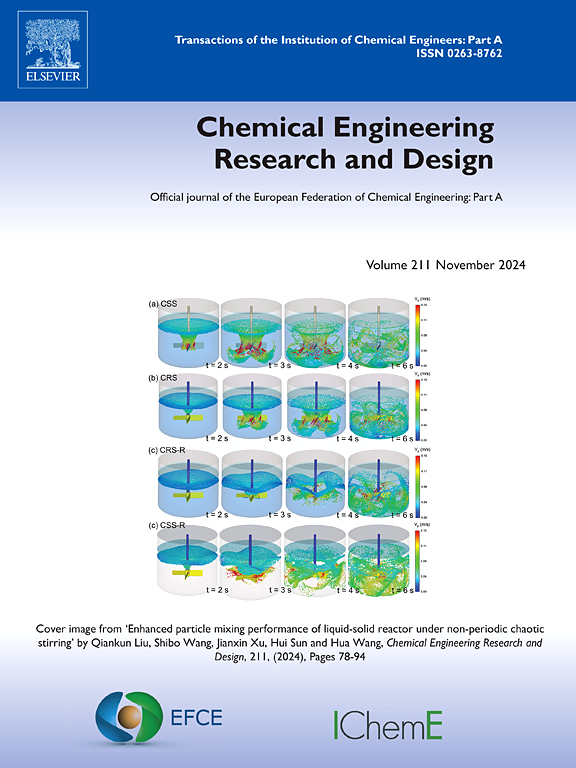Synthesis of silver sulfide acanthite phase nanoparticles for photothermal hybrid PSF membrane
IF 3.7
3区 工程技术
Q2 ENGINEERING, CHEMICAL
引用次数: 0
Abstract
Membrane distillation (MD) is an energy-intensive desalination technique hindered by high energy consumption. To address this limitation, we selected silver sulfide (Ag₂S) Nanoparticles (NPs) for incorporation into a polysulfone (PSF) membrane, aiming to enhance the photothermal membrane distillation (PMD) process. Ag₂S was chosen due to its unique photothermal properties, including efficient light absorption and conversion into heat, making it an ideal candidate for improving the thermal efficiency of MD membranes. The Ag₂S NPs were synthesized using the Chemical Bath Deposition (CBD) method and characterized through SEM, UV-spectroscopy, FT-IR, and EDX. The NPs were integrated into the PSF membrane at varying concentrations (0.5–2 %). The PSF/Ag₂S composite membranes demonstrated significant photothermal properties, with surface temperatures rising from 45.7°C to 52.3°C under light exposure. The water flux also improved from 5.4 L/m²h without light to 7.8 L/m²h with light in the optimal membrane containing 1.5 % Ag₂S. Additionally, contact angle (CA) measurements indicated increased hydrophobicity, while liquid entry pressure (LEP) values rose, further enhancing membrane performance. The composite membrane achieved a remarkable salt rejection rate of 99.99 %. These findings suggest that integrating Ag₂S NPs into PSF membranes significantly improves energy efficiency, water flux, and desalination performance. This makes it a promising approach for solar-driven desalination, with Ag₂S acting as an effective photothermal agent. The study underscores the potential of Ag₂S as a sustainable solution for improving MD efficiency, offering a new pathway to tackle global water scarcity.
求助全文
约1分钟内获得全文
求助全文
来源期刊

Chemical Engineering Research & Design
工程技术-工程:化工
CiteScore
6.10
自引率
7.70%
发文量
623
审稿时长
42 days
期刊介绍:
ChERD aims to be the principal international journal for publication of high quality, original papers in chemical engineering.
Papers showing how research results can be used in chemical engineering design, and accounts of experimental or theoretical research work bringing new perspectives to established principles, highlighting unsolved problems or indicating directions for future research, are particularly welcome. Contributions that deal with new developments in plant or processes and that can be given quantitative expression are encouraged. The journal is especially interested in papers that extend the boundaries of traditional chemical engineering.
 求助内容:
求助内容: 应助结果提醒方式:
应助结果提醒方式:


